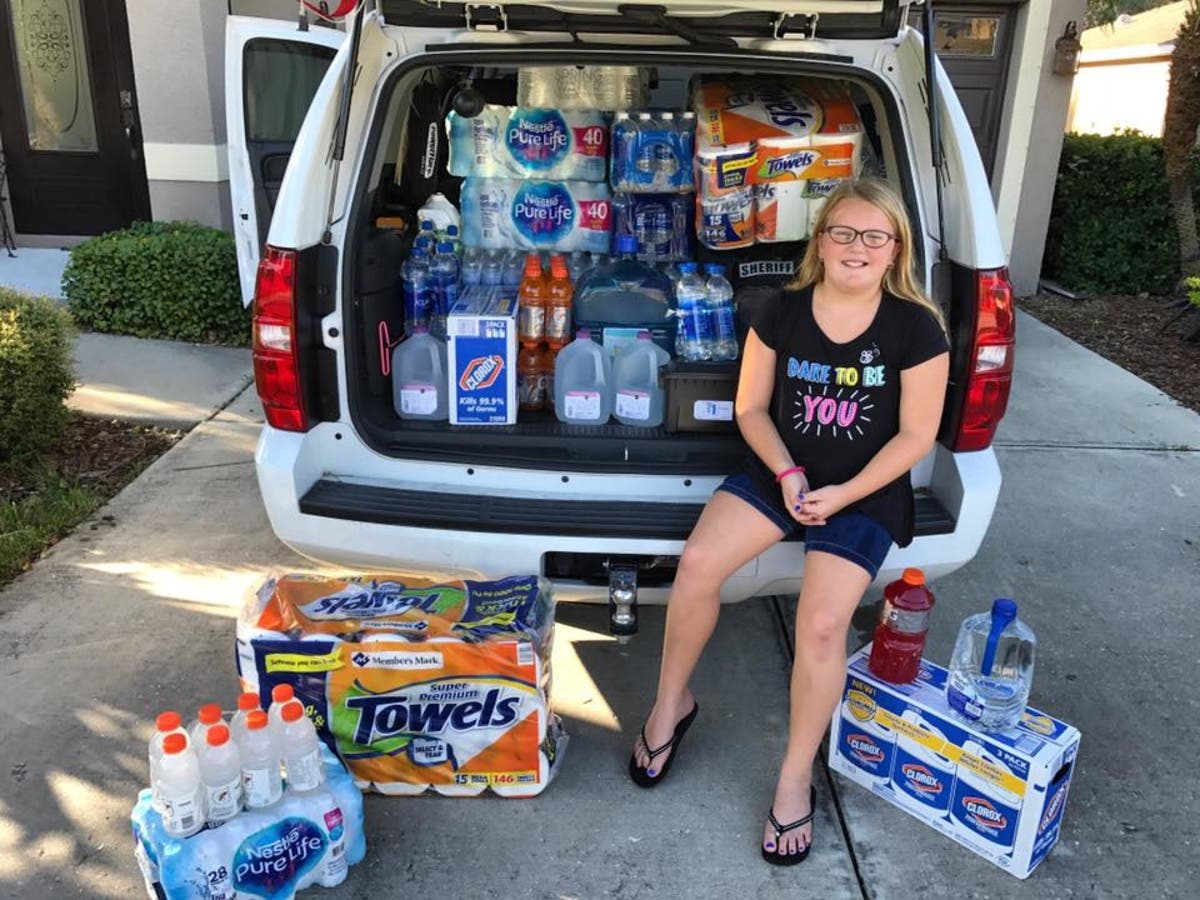Community Corner
Feeding Florida Coordinates Relief Efforts, Seeks Donations
The 14 member food banks across the state help the American Red Cross and FEMA with disasters like Hurricane Irma.
TAMPA, FL – For most of the year, the 14 food banks of the Feeding Florida network provides a healthy, adequate and consistent food supply to all communities across the state. But when disasters like Hurricane Irma strike, Feeding Florida helps everyone from the federal government to individual people help those in need.
When disaster strikes, the Feeding Florida food banks works on the ground to deliver food and emergency supplies to help people cope with the aftermath. By coordinating with state and federal partners, Feeding Florida work to ensure every impacted person receives resources they require.
“We are constantly assessing community needs and preparing to provide assistance and basic food supplies such as food, water hygiene and paper product to those who might be affected,” said Robin Safley, the executive director of Feeding Florida. “Our statewide network of food banks is an essential part of emergency disaster efforts as we support many of the front-line services aimed at providing essential items during response and recovery efforts.”
Find out what's happening in Seminole Heightswith free, real-time updates from Patch.
Before and during storms like Hurricane Irma, the 14 member food banks of Feeding Florida work overtime to support area refugee shelters. The network also stages food that will be delivered into disaster areas.
During disasters, Feeding Florida serves as a core member of Florida’s Emergency Operations Center to help coordinate the state’s emergency food response and disaster supplies. Feeding Florida also stays in contact with its federal partners at the USDA and Feeding America, by monitoring disasters on the ground and coordinating efforts with disaster partners like FEMA and the American Red Cross.
Find out what's happening in Seminole Heightswith free, real-time updates from Patch.
While its goal is to help the free flow of information get to all humanitarian organizations across the state, Feeding Florida also acts as a traffic cop for others who wish to help.
“Our second goal is to educate the concerned public on the best ways to help out without causing a ‘second disaster’ of uncoordinated donations and volunteers,” the organization said in a press release.
How to support Hurricane Irma Relief Efforts
When disasters happen, Feeding Florida representatives said the best form of support is financial donations. Money donated to the organization can be used immediately to purchase and distribute food, water and cleaning/hygiene items through bulk and planned buying.
By purchasing food in this manner, Feeding Florida can avoid the costs associated with sorting and transporting mixed food donations.
However, the food bank network said it recognizes some donors are unable to give financially or want to organize physical food drives in their communities. Feeding Florida suggests individual donators or drive organizers contact Feeding Florida or one of its member food banks to see whether their donations can be held until affected food banks are ready to receive it.
The 14 member food banks of Feeding Florida are:
- Agape Food Bank, 625 McCue Road, Lakeland
- All Faiths Food Bank, 8171 Blaikie Court, Sarasota
- America’s Second Harvst of the Big Bend, 110 Four Points Way, Tallahassee
- Bread of the Mighty Food Bank, 325 N.W. 10th Ave., Gainesville
- Feeding Northeast Florida, 1116 Edgewood Ave. N, Units D/E, Jacksonville
- Feeding South Florida, 2501 S.W. 32nd Terrace, Pembroke Park
- Feeding Tampa Bay, 4702 Transport Drive, Building 6, Tampa
- Feeding the Gulf Coast, 5709 Industrial Blvd., Milton
- First Step Food Bank, 4045 N.E. 36th Ave., Ocala
- Florida Gateway Food Bank, 553 N.W. Railroad St. Lake City
- Food Bank of Manatee County, 811 23rd Ave. E., Bradenton
- Harry Chapin Food Bank of Southwest Florida, 3760 Fowler St., Fort Myers
- Second Harvest Food Bank of Central Florida, 411 Mercy Drive, Orlando
- Treasure Coast Food Bank, 401 Angle Road, Fort Pierce
The most requested items by the food banks are:
- Hand-held snack items such as granola bars
- Pop-top, ready-to-eat items
- Shelf-stable pantry items like peanut butter, tuna and soup
- Bottled water
- Cleaning supplies (bleach, non-bleach, paper towels, etc.)
- Personal hygiene items (toothbrushes, toothpaste, etc.)
For more information about Feeding Florida or how to donate, visit www.FeedingFlorida.org.
Image 1 via Sarasota County (FL) Sheriff’s Office Facebook page
Image 2 via Sarasota Police Department Facebook page
Get more local news delivered straight to your inbox. Sign up for free Patch newsletters and alerts.
